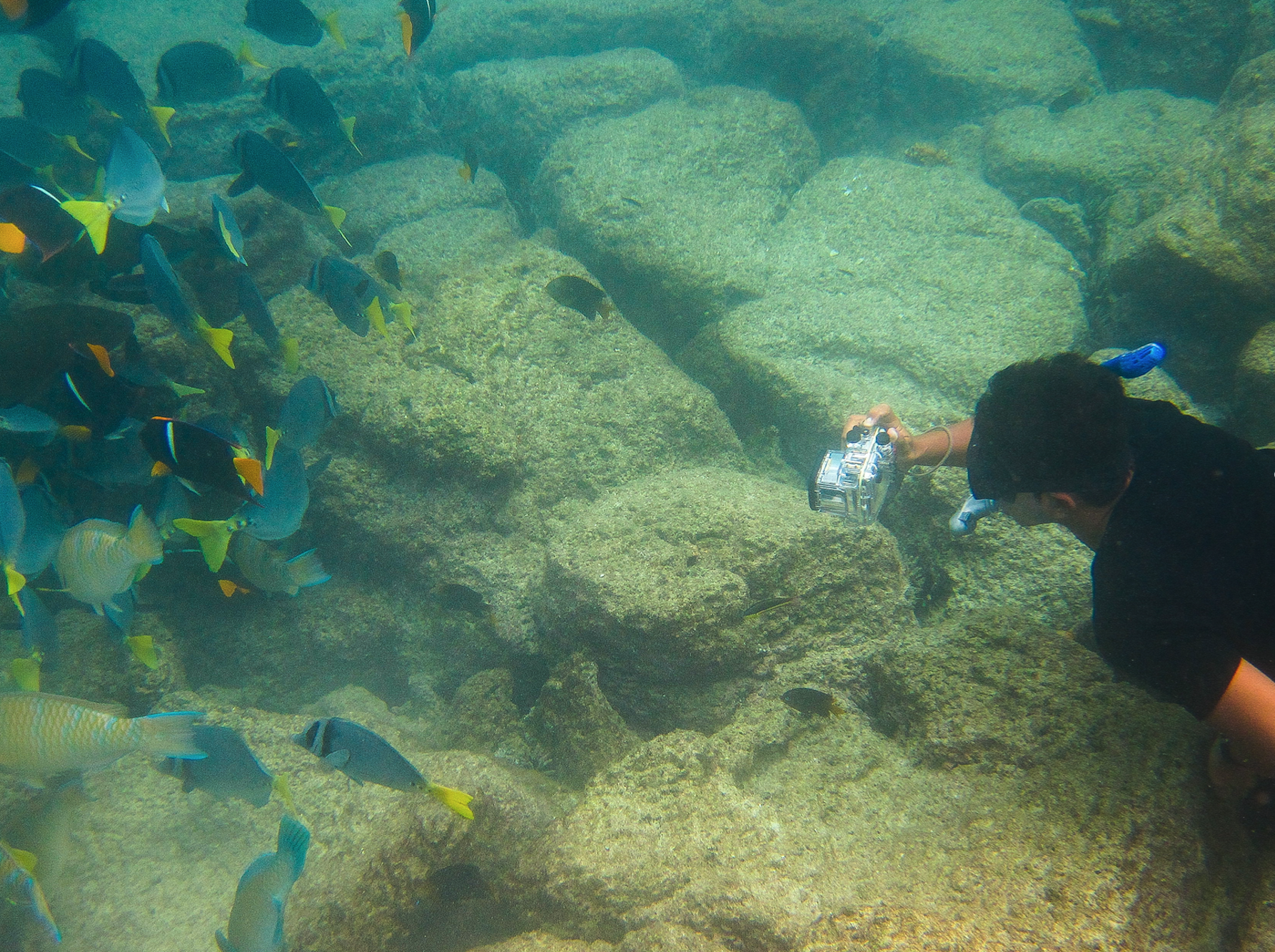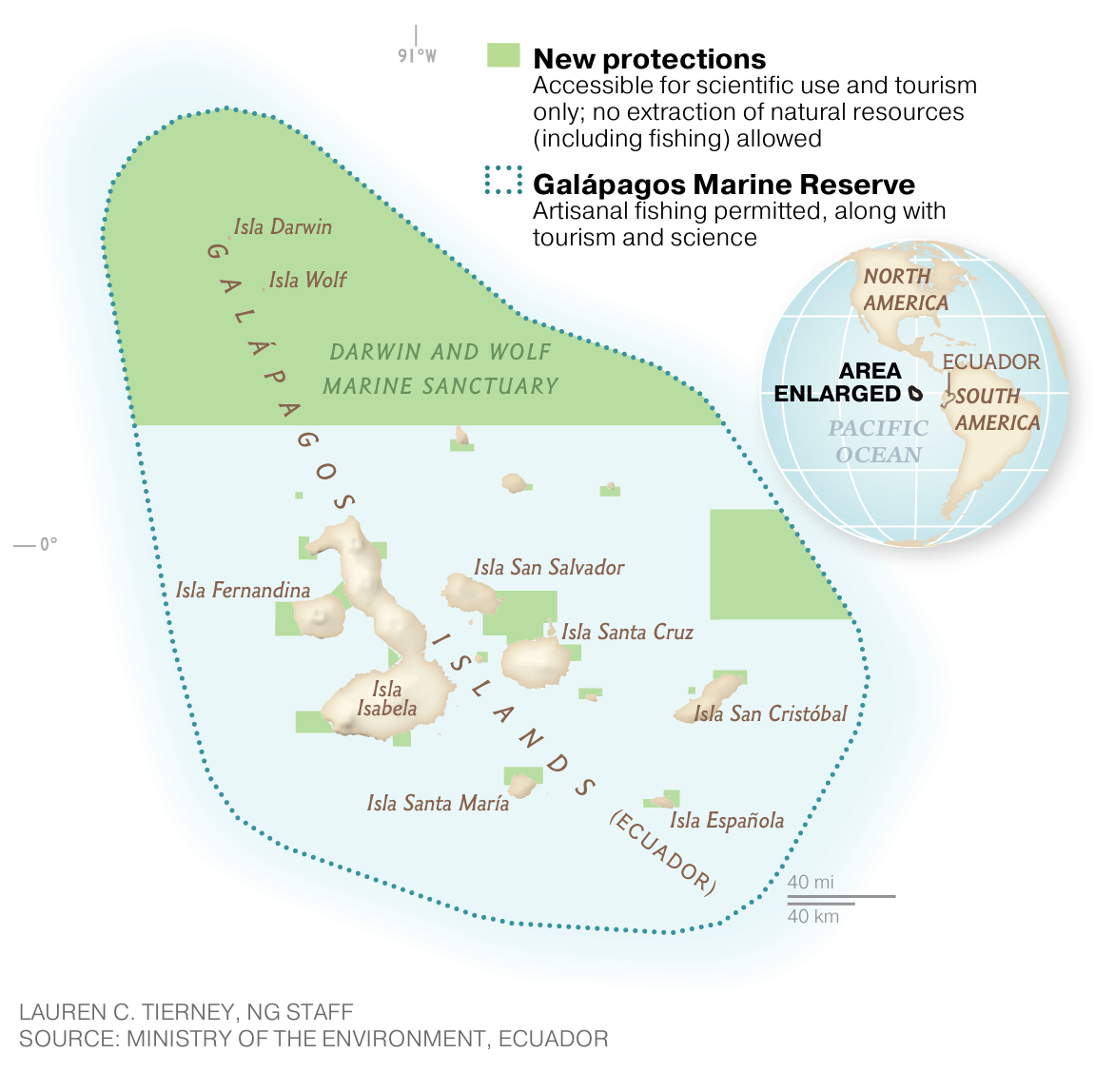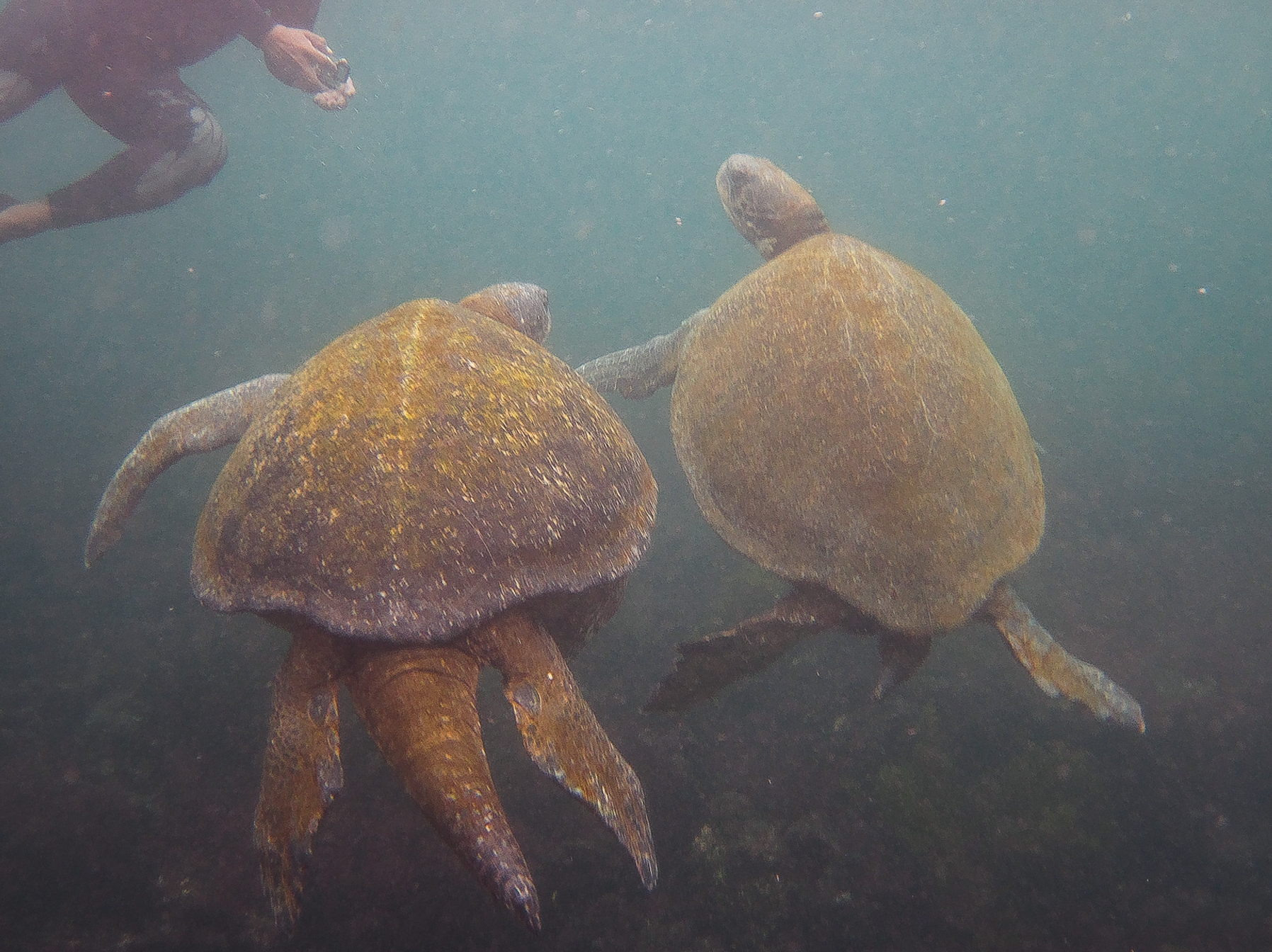
As National Geographic reports, Ecuador’s president, Rafael Correa, announced March 21 the creation of a new marine sanctuary, together with 21 smaller conservation areas scattered through the volcanic archipelago, protecting over 47,000 square kilometers, or about one third of the water around the Galápagos Islands (which Ecuador administers). The new sanctuary alone encompasses 40,000 square kilometers and extends around the northern Galápagos islands of Darwin and Wolf.
The new sanctuary, which is part of the overall Galápagos Marine Reserve is only accessible for scientific use and tourism. It is a great example of a marine protected area, where no fishing or any other extraction of natural resources is permitted (see map below).

It will be interesting to find out more about how much tour operators and the economy of tourism played a role in the wise decision of the Ecuador Government. Proving the point, a new study by the National Geographic Society’s Pristine Seas project and the University of California, Santa Barbara found that each shark in the Galápagos is worth about $5.4 million over its lifetime, thanks to interest from the booming diving and tourism industry. A dead shark, in contrast, only fetches about $200 to the fishermen. Marine-based tourism supports more than a third of all jobs in the Galápagos Islands, bringing in $178 million per year.
In any case the new marine sanctuary increases significantly the value of Galápagos as LT&C-Example. In particular the example of the huge no-fishing zone should be worthwhile to be replicated in other parts of the world.
Read more in the National Geographic News.



